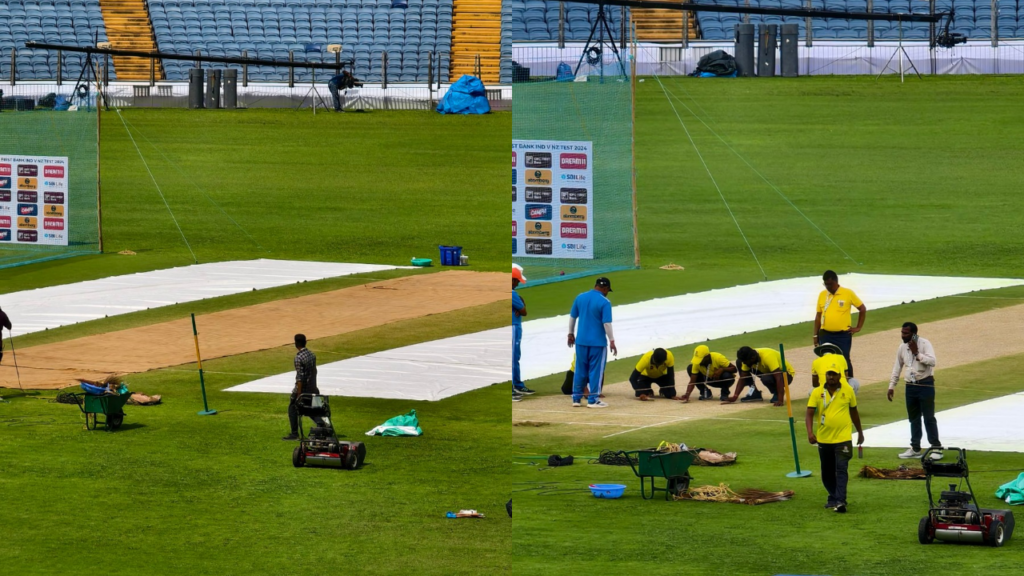If India’s defeat in the second Test against New Zealand has to be summarised in a few a words, here it is – they dug their own grave. By laying out a pitch that assisted spin, the hosts effectively reduced the gap between them and the visiting side. This was almost like a lottery, where luck played a bigger role than ability. Undoubtedly, it hurt India and led to first home series loss after 12 years.
We were discussing this before the Pune Test started. That’s because this is the venue where India rolled out a spinner-friendly pitch against Australia in 2017 and crashed to a 333-run defeat. Things were not as bad for this game, but it was not conducive for batting. Of the 40 wickets, 37 were claimed by spinners, there were two run-outs and one wicket was taken by a fast bowler.
Let’s deviate from cricket and try to understand from the point of view of football. If a game takes place between two unevenly matched sides on a turf left muddy by rain, the team that has better control over the ball and superior skills will be the one to suffer more. The conditions will hinder their natural abilities and make the inferior team look better.
Similarly, India, the better side on paper compared to New Zealand and justifiably so, reduced the gap between themselves and their rivals by opting for a pitch loaded in favour of the spinners. The Indian spinners are better than the New Zealanders on a normal surface. Had the match lasted five days, this would have become evident. But by rolling out this pitch, India reduced this gap.
Does it mean that the team management didn’t trust Ravichandran Ashwin and Ravindra Jadeja to deliver on a decent track? They were the ones who have done that in the past against many teams, most recently against England earlier this year. After losing the first Test on a turning pitch in Hyderabad, India won the last four in more even conditions. There was no problem then.
For some reason, after losing the first Test against New Zealand in Bengaluru, the team decided that the only way to get back in the series was a rank turner. By doing that, they not only underestimated the strengths of the vaunted spin duo, but also exposed their own batters to one of their known vulnerabilities. These batters are not as good on turning tracks as the previous generation.
Be it Virat Kohli or Rohit Sharma or anyone else, they have always struggled in conditions where the ball spun more than their expectations. They are excellent in normal batting conditions, as has been seen time and again. This turner in Pune neutralised them. They were circumspect and it showed in the manner they crumbled against Mitchell Santner.
On a normal Indian pitch, Ashwin and Jadeja would surely have been more effective than the New Zealand spinners. They know how to operate when things are not loaded in their favour. The New Zealanders don’t, and it was a gift for them to present them with conditions which brought their spinners into play. They accepted it gleefully and won an important toss.
Other than making the Indian batters ineffective and bringing the spinners down to the level of the New Zealanders, this pitch also denied Jasprit Bumrah a proper go at the visitors. They struggled to make connection with the ball when he was bowling in the first Test. He was unplayable, although he didn’t have luck to return a bagful of wickets.
Here, the world’s best fast bowler ended up bowling 14 overs in the match. India bowled 150 overs across the two innings. Akash Deep, the other fast bowler, got six overs in the first and none in the second. Effectively, India operated in this Test with just three bowlers despite having five in the XI. If this is not compromising your strength, then what is? It was shocking.
The problem is, this is an old issue. Gautam Gambhir, the coach, was part of the XI in the 2012 Test against England in Mumbai where India lost badly on a turning track. As mentioned earlier, Pune in 2017 against Australia was another example. Neither Gambhir nor the team seemed to have learned from those. The result was no surprise. This is what happens when you invite peril.




